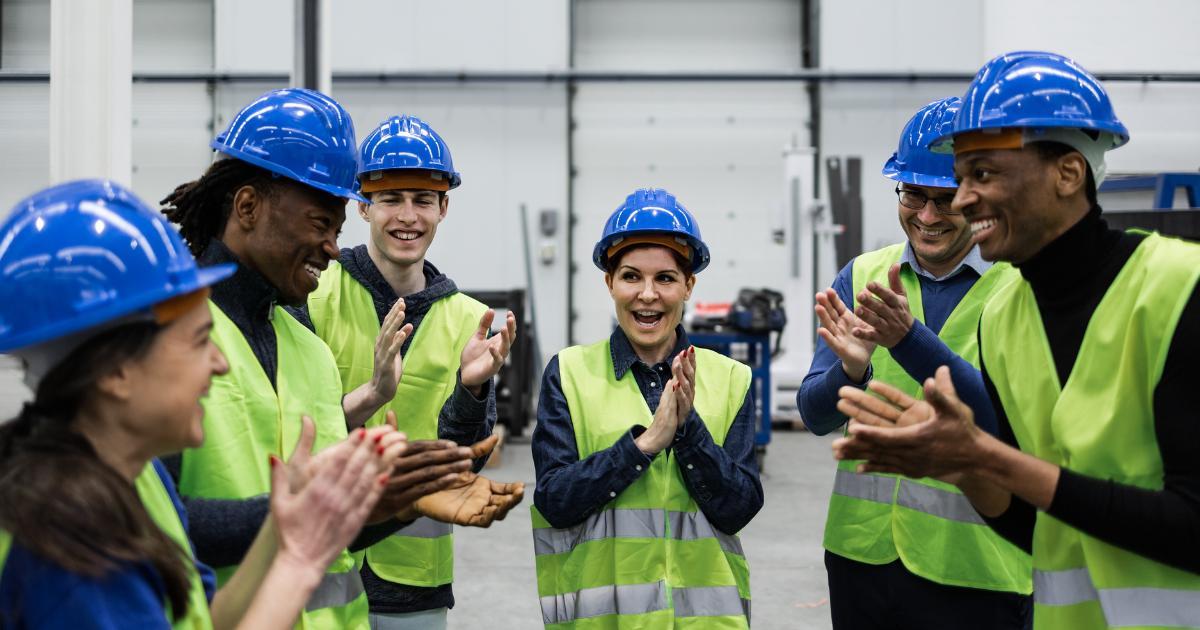High industry turnover rates are undoubtedly one of the most common issues employers are struggling with these days. Manufacturing and logistics is no exception.
You may think: No one wants to work anymore.
But we challenge you to look at it differently and think about turnover as a symptom of a bigger issue.
Why don’t people want to work anymore? Why aren’t workers staying?
In reality, there’s no singular and clear-cut answer that applies to every organization. But consider these worker stats:
- 63% of workers feel unappreciated by their employer
- 74% who receive little recognition at work do not plan to be at the organization in one year
- Companies with effective recognition programs have 31% lower voluntary turnover
- 53% of employees say they would stay longer in a company if they feel appreciated
We think you can see where this is going.
While gratitude and recognition at work are not the only solution to a staffing problem, you have to admit that they can play a big role in attracting and retaining employees.
What’s the difference between Gratitude and Appreciation?
Gratitude and appreciation go hand in hand, but are not the same thing:
Gratitude is a feeling of thankfulness. You can feel grateful for employment and working with a supportive team.
Appreciation is an act of gratitude, or giving recognition to someone or something specific. To show appreciation for a coworker, you might praise them during your team meeting for catching a shipping error that could have cost the company thousands of dollars.
The Benefits of Gratitude at Work
When we focus on the positive by practicing gratitude, it doesn’t mean you ignore the negative. Nor does it mean toxic positivity. But it does help shift your mindset. Practicing gratitude should be essential in the workplace because 65% of people who regularly give thanks consider themselves to be “very happy”.
And you know what they say about happy employees:
- They are more engaged
- Are more productive
- They demonstrate loyalty
- Create a more positive work environment
We expand on these four benefits of gratitude at work below.
Employee Engagement
Disengaged workers cost the U.S. upwards of $550 billion in lost productivity per year.
Ouch.
When statistics show direct correlation between employee engagement and the company’s bottom line, leaders should take note. Consider the following:
- 80% of employees state that they would work harder if they felt more appreciated at their job
- Engaged teams generate 21% more profit than disengaged teams
- 28% of employees say recognition from their manager is the most memorable
Leaders who value the people who work for them are a driving force behind higher employee engagement. Share your gratitude and appreciation for them — often — and notice the impact it makes on team morale.
Productivity
Think of the last time your boss or co-worker told you they were thankful for all that you do. We’re willing to bet that it put a smile on your face and an extra pep in your step for the rest of the day or week.
The same goes for your team! Give them some pep by voicing your sincere gratitude and you might just experience:
- A 12% increase in productivity
- Fewer quality defects
- Beating the competition by 20%
Employees who feel recognized and appreciated on a regular basis don’t want to let their boss or teams down. Make it a point to show employees gratitude frequently and watch your production numbers soar.
Employee Loyalty
Cultivating a culture of gratitude is a huge contributor to employee satisfaction. Let’s look at the stats:
- Employees who are recognized are almost 6X more likely to stay at their jobs than those who aren’t
- Employees who are happy at work take 10X fewer sick days than unhappy workers
- Satisfied employees are 59% less likely to find a new job
Only 25% of employees who quit their jobs cite money as the main reason for leaving. While people leave jobs for various reasons, you have the ability to make sure that feeling appreciated isn’t one of them.
Positive Work Environment
No one wants to work in a negative environment, but sometimes it’s hard to look on the bright side. In fact, our brains are wired to have a more emotional response to negativity than positivity.
While no company is perfect, ideally the positive employee experiences far outweigh the negative.
And that’s a perfect example of where gratitude comes into play.
Gratitude is a choice, so when you choose to look at the positive in every situation and practice being thankful, it makes you happier. And when you’re happy, you smile more. You’re more friendly. People are drawn to you. Your happiness is contagious.
That’s a big deal when 60% of employees consider their colleagues to be the biggest contributors to job happiness.
Put some gratitude in your attitude
If gratitude is not part of your company’s strategy for retention and growth, it should be.
Employees who feel valued and appreciated by both management and their coworkers are more engaged and productive, more likely to stick around, and help foster a positive workplace.
Implementing a culture of gratitude is quick, easy, and free — and can make a positive impact on your team and your company’s bottom line all year round.







